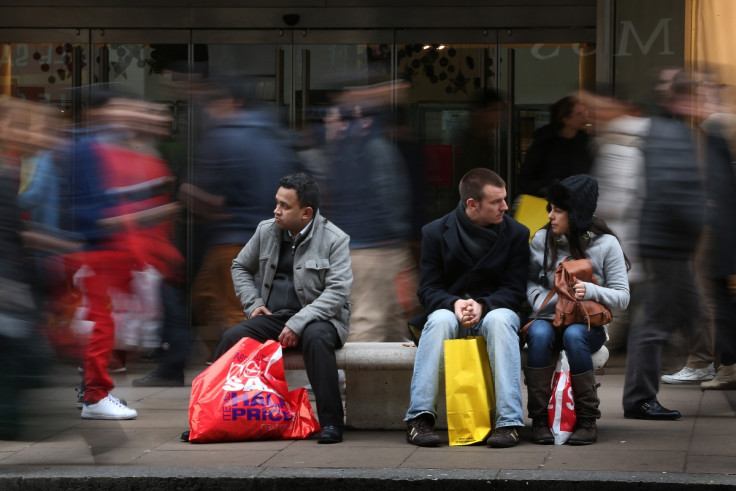London's Oxford Street is too busy - we need to pedestrianise it

Oxford Street is Europe's busiest retail street and is arguably the most iconic in the UK. It receives more than half a million visitors every day and gets busier in the lead-up to Christmas. By the end of next year Living Streets, the UK charity for everyday walking, wants Oxford Street to be closed to vehicles and open to more people. We want the new London Mayor to put walking first in London and begin creating this vision on Oxford Street.
This is particularly important now. Oxford Street is already at breaking point with shoppers hemmed in by traffic and breathing dangerously polluted air. Crossrail is the game changer. By 2026 it's estimated to bring in 200% more people through both Tottenham Court Road and Bond Street stations and the situation is likely to get a lot worse.
Now is the time to make changes that will benefit everyone. We need to work up creative and innovative solutions for how Oxford Street can come back from the brink of disaster and become an enjoyable and attractive place to live, shop and be in. We must stop London from becoming a mega-city choked by traffic, with polluted, hazardous town centres and streets. We want a London that is a world-leading city with the freedom to walk, breathe fresh air and experience our iconic streets, public spaces, and fantastic thriving town centres.
Pedestrianising high streets has been shown to not only be good for those walking but also for business. Well-planned improvements to public spaces can improve footfall by up to 40%, retail footfall by about a third and retail turnover by up to 25%. There is evidence to show that pedestrians and cyclists spend more than people arriving by motorised transport – because they stay longer and visit more often.
In Leicester, pedestrianisation, and improvements to the local environment (2011) resulted in 91% of retailers feeling that the space surrounding their business location had improved and 64% agreed that these improvements have been good for business. In fact, 73% stated that the improvements had helped to attract visitors.
Since Oxford Street introduced a diagonal crossing at Oxford Circus, helping people to navigate the traffic, one retailer has experienced a 25% increase in turnover. It's been shown that over a month, pedestrians in London spend £147 more than those who drive to shops.
Trafalgar Square's pedestrianisation has also produced positive results. The improved environment for pedestrians led to an increase in visitors of 300% (Tolley 2011) showing that this particularly helps to attract tourists (who currently represent 50% of those visiting Oxford Street).
We want to see a better Oxford Street, safe to walk along and with fresh air to breathe, but we're very far from that at the moment. Every six days someone walking along it is involved in an collision with a vehicle. By the second week of January, Oxford Street breaches the total annual nitrogen dioxide limits set by the EU. Eliminating these problems begins with the next London Mayor putting walking first.
Ultimately we want the full 1.2 mile stretch closed to through-traffic, with a principle that people should be seen as more important than vehicles. London's old bus route network means that far more buses go through Oxford Street than is necessary. Up to 300 buses an hour still pass along the road at peak times. This is an opportunity to look at historical bus journeys and whether bus travel through London could be changed. Perhaps some buses could be re-routed – but we know that diverting identical traffic problems to other nearby streets isn't the answer, so we also need to talk about better, more imaginative solutions.
A number of alternatives have been suggested. Transport planners could look to reduce the number of buses rather than considering re-routing them all. Another proposal is to introduce a shuttle bus or a tram just going up and down Oxford Street with a bus depot at either end to connect with longer distance routes. People could also be encouraged to use other public transport alternatives, particularly once Crossrail has been introduced. There are 38 side-streets entering Oxford Street, regularly spaced out along its whole length, so with a well-planned network, nobody would have to walk too far to find a means of transport.
Most importantly, we must do something and figure out a solution. With the help of the next London Mayor we believe London can be a world-leading city with attractive, safe and thriving town centres.
Sarah Williams is London Campaigns Manager for Living Streets
© Copyright IBTimes 2025. All rights reserved.




















